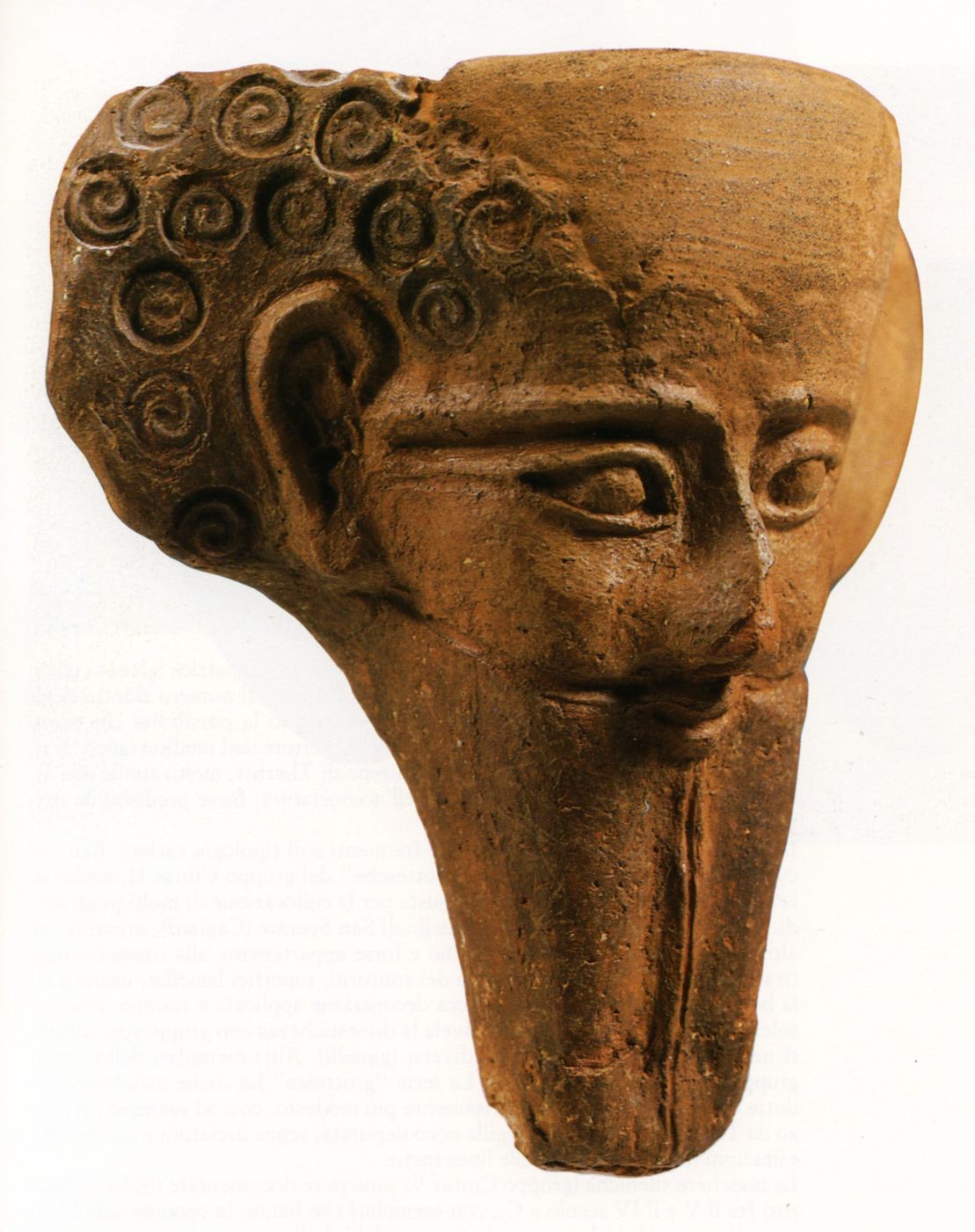Male bearded protome from the temple of Astarte
Protomes and masks portraying a human face are some of the most interesting votive terracotta items from the Phoenician and Punic world. The heads are sometimes represented in Egyptian style, sometimes in Greek style. They are generally found in the tombs, as one of the items accompanying the deceased and to protect them; they rarely comes from sanctuaries, like Monte Sirai.
The beautiful male protome found in the ‘temple of Astarte' (fig. 1) has a large hairstyle where the curls on the head are made using the pattern known as impressed ‘shells’ (figs. 3-4).

The type of our protome beard reminiscent of a statue carved on the pillar of the nearby tomb Sulci (fig. 2).



The protome, very similar to specimens known to Carthage and Sicily, dates back to a pe-riod between the sixth and fifth centuries B.C.
Bibliografia
- F. BARRECA, La civiltà fenicio-punica in Sardegna, Sassari.
- P. BARTOLONI, Monte Sirai.
- P. BERNARDINI, Aspetti dell’artigianato funerario punico di Sulky. Nuove evidenze, in M.MILANESE, P.RUGGERI, C.VISMARA (a cura di), I luoghi e le forme dei mestieri e della produzione nelle province africane. Atti del XVIII convegno di studio, Olbia, 11-14 dicembre 2008, pp. 1257-1266.
- A. CIASCA, Le protomi e le maschere, in S. MOSCATI (a cura di), I Fenici (Palazzo Grassi, Catalogo della mostra), Milano, pp. 354-369.
- M. G. AMADASI GUZZO, Monte Sirai - II. Rapporto preliminare della missione archeologica dell'Università di Roma e della Soprintendenza alle antichità di Cagliari (Studi Semitici, 14), Roma 1965.
- S. MOSCATI, Artigianato a Monte Sirai (Studia Punica, 10), Roma.

 VR
VR